Interesting Facts About Human Brain
Table of Contents
- The human brain is almost twice as large as the brain of the bottlenose dolphin, and three times as large as the brain of a chimpanzee.
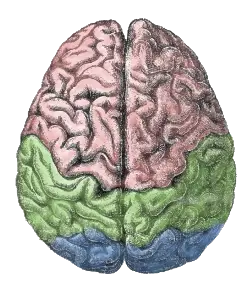 The left-hand side of your brain controls the right -side of your body whereas the right-hand side controls the left part of the body .
The left-hand side of your brain controls the right -side of your body whereas the right-hand side controls the left part of the body .- The adult human brain weighs on average about 3 lbs. (1.5 kg)
- The brain grows quickest until the age of 5.
- The brain consumes up to 20 % of the energy used by the human body, more than any other organ. brain
- Although the human brain represents only 2% of the body weight, it receives 15% of the cardiac output, 20% of total body oxygen consumption, and 25% of total body glucose utilization.
Interesting Facts About Human Eye
- The human eye can distinguish about 10 million colors.
 The typical adult eye has an anterior to posterior diameter of 24 millimeters, a volume of six cubic centimeters (0.4 cu. in.), and a mass of 7.5 grams (weight of 0.25 oz.).
The typical adult eye has an anterior to posterior diameter of 24 millimeters, a volume of six cubic centimeters (0.4 cu. in.), and a mass of 7.5 grams (weight of 0.25 oz.).- The only part of the body that has no blood supply is the cornea in the eye. It takes in oxygen directly from the air.
- eyes
The approximate field of view of an individual human eye is 95° away from the nose, 75° downward, 60° toward the nose, and 60° upward. The eyeball of a human weighs approximately 28 grams.
Interesting Facts About Human Heart
- The human heart has a mass of between 250 and 350 grams.
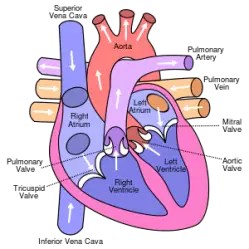 The human heart is about the size of a large fist.
The human heart is about the size of a large fist.- The human heart is so powerful that it can squirt the blood no less than 9 meters high. heart
Interesting Facts About Human Lungs
- Together, the lungs contain approximately 2,400 kilometers (1,500 mi) of airways and 300 to 500 million alveoli, having a total surface area of about 70 square meters (750 sq ft) (8,4 x 8,4 m) in adults — roughly the same area as one side of a tennis court.
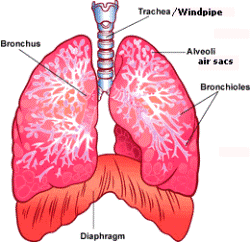 The right lung is bigger than the left lung. The left lung is small so as to adjust the heart in that part.
The right lung is bigger than the left lung. The left lung is small so as to adjust the heart in that part.- The lungs have three lobes on the right and two on the left.
lungs
Each lung weighs 1.1 kilograms (2.4 lb), therefore making the entire organ about 2.3 kilograms (5.1 lb).
Interesting Facts About Human Kidneys
- The right kidney is slightly lower than the left.
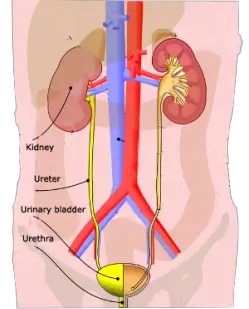 Each adult kidney weighs between 125 and 170 grams in males and between 115 and 155 grams in females.
Each adult kidney weighs between 125 and 170 grams in males and between 115 and 155 grams in females.- The left kidney is typically slightly larger than the right kidney.
- The kidney is approximately 11–14 cm in length, 6 cm wide and 4 cm thick.
- The kidneys filter about 1.3 liters of blood every minute & expel up to 1.4 liters of urine in a day.
- The kidneys receive approximately 20% of the cardiac output. kidneys
Interesting Facts About Human Liver
- A human liver normally weighs 1.44–1.66 kg (3.2–3.7 lb).
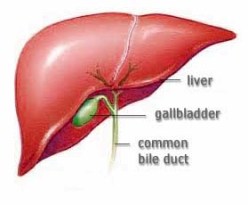 It is both the largest internal organ (the skin being the largest organ overall) and the largest gland in the human body.
It is both the largest internal organ (the skin being the largest organ overall) and the largest gland in the human body.- The liver gets dual blood supply from the hepatic portal vein and hepatic arteries.
liver
Interesting Facts About Human Large Intestine & Small Intestine
- Large Intestine: The large intestine is about 4.9 feet (1.5 m) long, which is about one-fifth of the whole length of the intestinal canal.
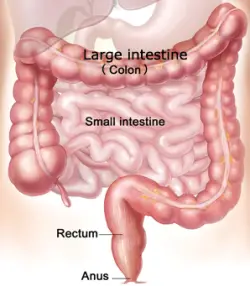 The large intestine takes about 16 hours to finish the digestion of the food.
The large intestine takes about 16 hours to finish the digestion of the food.- The large intestine houses over 700 species of bacteria that perform a variety of functions.
- Small Intestine: The average length of the small intestine in an adult human male is 6.9 m (22 feet 6 inches), and in the adult female 7.1 m (23 feet 4 inches).
intestine - It can vary greatly, from as short as 4.6 m (15 feet) to as long as 9.8 m (32 feet). It is approximately 2.5–3 cm in diameter.
Interesting Facts About Human Urinary Bladder
- The urinary bladder usually holds 300-350 ml of urine.
 The urge to urinate is triggered when the bladder contains about 100 to 200 ml of urine. kidneys
The urge to urinate is triggered when the bladder contains about 100 to 200 ml of urine. kidneys
Interesting Facts About Human Stomach
- The average human stomach can comfortably hold about a liter of food. In adult humans, the stomach has a relaxed, near the empty volume of about 45 to 75 ml.
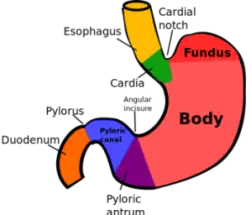 Because it is a distensible organ, it normally expands to hold about one liter of food but can hold as much as two to three liters.
Because it is a distensible organ, it normally expands to hold about one liter of food but can hold as much as two to three liters.- The stomach of a newborn human baby will only be able to retain about 30 ml. stomach
